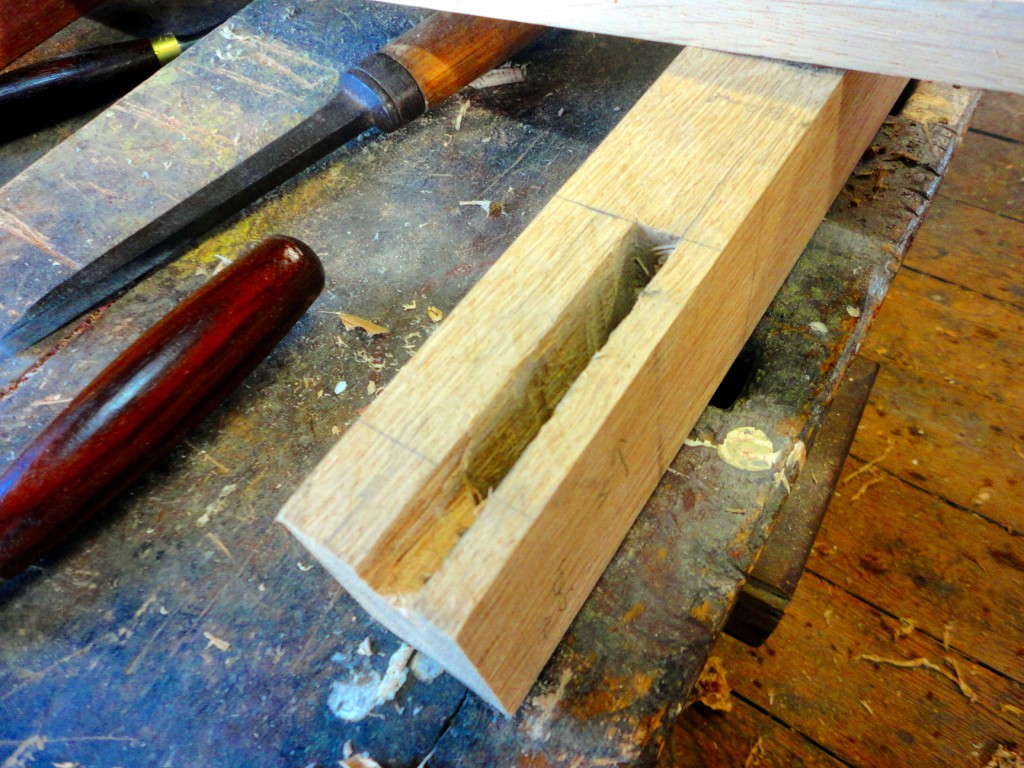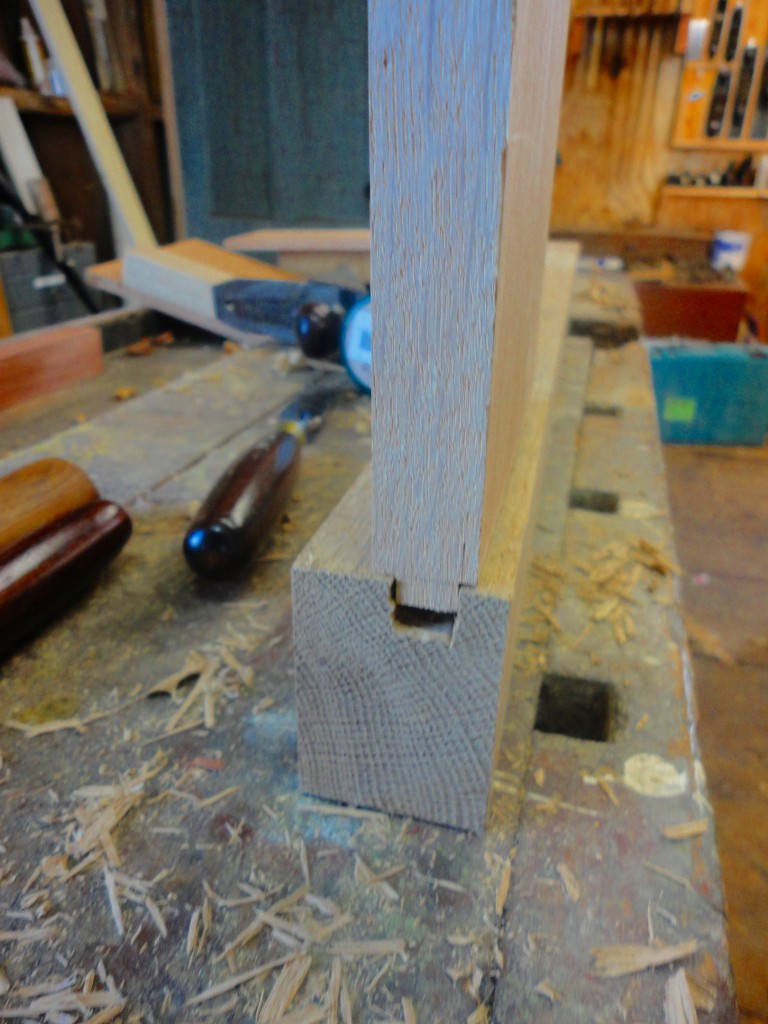
I do kind of feel a bit silly bragging about progress on one of my woodworking projects right after a post about a house project that will keep me from the workshop for a week or so. But I’ve never really worried too much about looking silly. Or feeling silly.
I was able to get time in the workshop over the holiday break. I had parts for the kitchen island milled sitting in the workshop for a couple of months, so it seemed time to finally start working on that project. At least before I started another project (yeah, okay, Will’s room got me there).
The island will be a pretty simple. Four legs. Four aprons. And four stretchers near the bottom supporting a shelf. That means there will be four joints on each leg, each requiring a mortise.
I marked out each mortise with a marking gauge, and drilling out the waste on the drill press. The mortises were cleaned out using a chisel. Each mortise didn’t take too long to make once I got in the swing of things. I could finish one of the smaller ones in about 7 minutes, and one of the larger ones in less than 15 minutes. I’m sure that will get faster as I do more of them.
I have a couple of lessons learned:
1. If the stock has been sitting around a while, re-mill each piece to ensure it didn’t change shape over time.
2. Cut all the mortises first. Sketch out all the locations of the mortises with a pencil before marking with the gauge. I wound up starting to drill out a mortise in the wrong spot.
3. Regarding #2, patching a mortise in the wrong spot takes some skill to get so it isn’t obvious. Skill that I don’t have. So, it is sometimes better to be lucky than good (okay, probably not in this case), but at least I was lucky and the patch is in an area that shouldn’t be obvious.
4. I don’t really like my marking gauge. I think that a better marking gauge is in the future. The marking gauge I have is difficult to set up for a specific mortise thickness (at a given distance from a face of the panel. I think a better method is to use a single marking gauge (vice a double one) and a spacer block to get the correct mortise (and tenon) thickness.
5. Do the mortises first. I don’t know what I was thinking cutting a couple of the tenons before I finished the mortises. Must be the ADHD. This is what you get if you do that:

I could definitely spend more time marking out the joinery before cutting it. I have Robert Wearing’s book, “The Essential Woodworker.” He gives what looks like a pretty good method for marking out the joinery – I think I’ll do some review before my next project.

Making good progress. Nice to see you are sticking with the woodworking